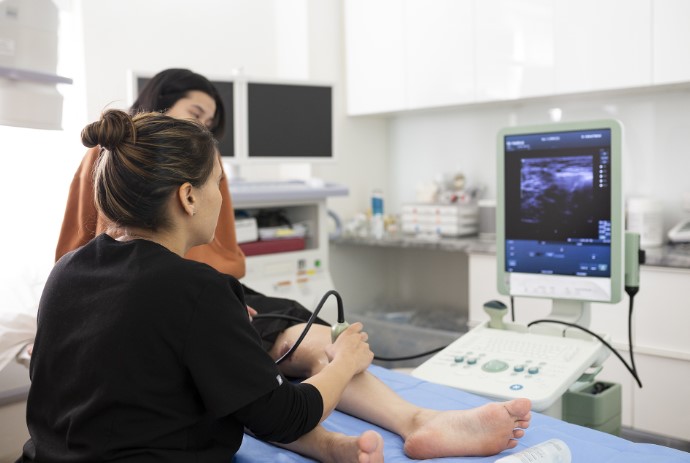Spider veins, those small, twisted, and often unsightly veins that appear on the surface of the skin, can be a source of frustration for many. While they are generally harmless, their appearance can cause self-consciousness and discomfort. If you’re considering treatment for spider veins, you may be wondering: Does spider vein removal really work? This article explores various treatment options, their effectiveness, and what you can expect after undergoing spider vein removal.
Understanding Spider Veins
Spider veins, medically known as telangiectasia, are small dilated blood vessels that appear close to the surface of the skin. They often resemble spider webs or tree branches and are most commonly found on the legs and face. Several factors can contribute to the development of spider veins, including:
- Genetics: A family history of spider veins may increase your risk.
- Hormonal Changes: Hormonal fluctuations during pregnancy, puberty, or menopause can lead to spider vein formation.
- Age: As we age, our veins may lose elasticity, contributing to the appearance of spider veins.
- Lifestyle Factors: Prolonged standing or sitting, obesity, and sun exposure can also increase the likelihood of developing spider veins.
Treatment Options for Spider Veins
When it comes to addressing spider veins, there are several treatment options available. Understanding these options is crucial to answering the question: Does spider vein removal really work? Here are some of the most common treatments:
1. Sclerotherapy
Sclerotherapy is one of the most popular and effective treatments for spider veins. During this procedure, a healthcare professional injects a solution directly into the affected veins. This solution irritates the vein lining, causing it to collapse and eventually fade from view.
Effectiveness: Most patients notice significant improvement within a few weeks. Multiple sessions may be required for optimal results, and many find that the procedure is effective in reducing the appearance of spider veins.
2. Laser Therapy
Laser therapy utilizes focused light beams to target and destroy the spider veins. This non-invasive treatment is particularly effective for smaller veins, especially on the face.
Effectiveness: Many patients experience noticeable results after just one session, with further improvement seen over time as the body reabsorbs the treated veins. However, like sclerotherapy, multiple sessions may be necessary, depending on the extent of the spider veins.
3. Intense Pulsed Light (IPL) Therapy
Similar to laser therapy, IPL therapy uses light energy to treat spider veins. The treatment can address a broader range of skin issues and is beneficial for those with both spider veins and other skin concerns.
Effectiveness: Patients often see a gradual reduction in spider veins, with the best results emerging several weeks after treatment.
4. Radiofrequency Ablation
This technique uses radiofrequency energy to heat and close off spider veins. While more commonly used for larger varicose veins, it can also be effective for spider veins.
Effectiveness: Patients typically report good results, and the procedure can be performed in a doctor’s office with minimal downtime.
What to Expect After Treatment
After considering whether does spider vein removal really work, it’s essential to understand what happens post-treatment. Patients often experience some degree of bruising or swelling, which usually subsides within a few days. Here’s what you can expect:
- Recovery Time: Most patients can resume their normal activities shortly after the procedure, although it’s advisable to avoid strenuous exercise for a short period.
- Results Timeline: While some patients may see immediate results, it often takes weeks or even months for the full effects to become apparent as the treated veins gradually fade.
- Follow-Up Treatments: Depending on the severity of your spider veins, you may need follow-up sessions to achieve the desired results.
Factors Influencing Treatment Success
Several factors can influence the success of spider vein removal treatments, helping to answer the question of whether they really work:
1. Severity of the Condition
The extent and severity of your spider veins can impact how well treatments work. Smaller, less severe veins may respond better to sclerotherapy or laser treatments compared to larger, more established veins.
2. Skin Type
Your skin type and color can also affect treatment outcomes. Lighter skin typically responds better to laser treatments, while darker skin may require special consideration to avoid pigmentation changes.
3. Treatment Technique
The skill and experience of the healthcare professional performing the procedure are critical. Choosing a qualified provider with a good track record can significantly influence your results.
4. Post-Treatment Care
Following post-treatment care instructions is vital. For instance, wearing compression stockings can enhance treatment effectiveness by promoting proper circulation.
Long-Term Effects and Maintenance
One of the lingering questions surrounding spider vein removal is whether the results are permanent. While treatment can effectively eliminate existing spider veins, it doesn’t prevent new ones from forming. Here’s how to maintain your results:
- Healthy Lifestyle Choices: Maintaining a healthy weight, staying active, and avoiding prolonged periods of sitting or standing can help reduce the risk of new spider veins.
- Regular Check-Ups: Consult with your healthcare provider for periodic evaluations to monitor your vein health.
- Follow-Up Treatments: Some individuals may choose to undergo maintenance treatments to keep their legs looking their best.
Conclusion: Does Spider Vein Removal Really Work?
In summary, does spider vein removal really work? The answer is a resounding yes, as various treatment options can effectively reduce the appearance of spider veins. Sclerotherapy and laser therapy are among the most effective methods, with many patients experiencing significant improvements. However, the success of treatment depends on various factors, including the severity of the condition, skin type, and the expertise of the provider.
If you’re considering spider vein removal, consult with a qualified healthcare professional to determine the best treatment plan for your specific needs. With the right approach, you can regain your confidence and enjoy smoother, clearer skin.


